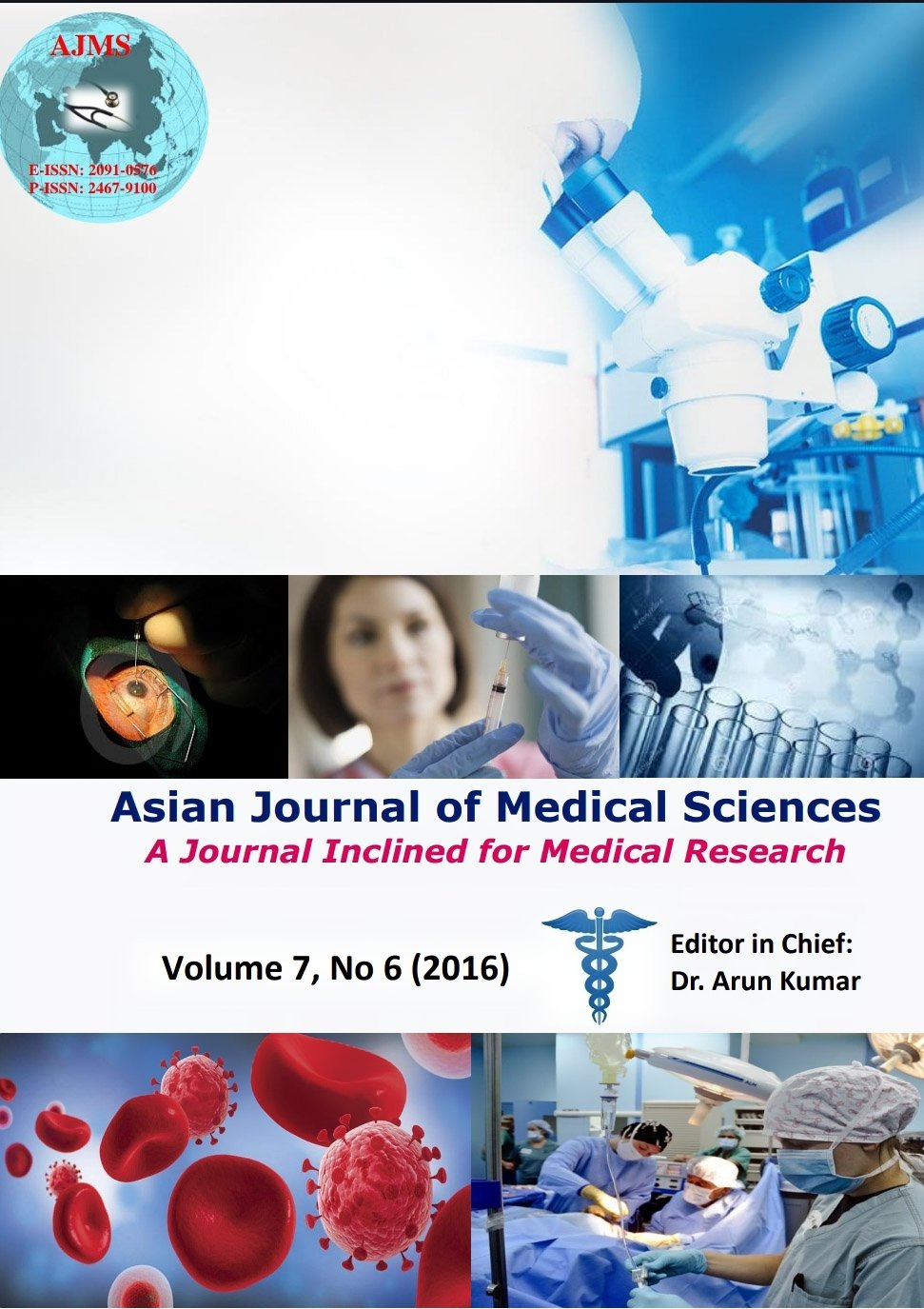Combined CT guided tru-cut biopsy and imprint cytology in the diagnosis of bone tumors and tumor like lesions
Keywords:
Bone lesions, Imprint cytology, Tru-cut biopsyAbstract
Background: Bone lesions are often histologically heterogenous. The advantage of tru-cut biopsies in this context is that they provide a safe and accurate biopsy technique that can be performed in less specialized centers. In this series we found combination of biopsy and cytology helpful in diagnosing bone lesions. However clinical picture and radiologic features are vital in arriving at a final diagnosis.
Aims and Objective: 1) To assess the diagnostic accuracy of combined CT guided tru-cut biopsy and imprint cytology in the diagnosis of bone tumors and tumor like lesions. 2)To analyze the spectrum of different bone lesions.
Materials and Methods: 108 consecutive cases of bone lesions for which CT guided tru-cut biopsy and imprint cytology were done between June 2010 and april 2012 were retrospectively studied. Both smears and biopsies were categorized into five groups.Correlation between biopsy and cytology were also evaluated.
Results: Total number of cases were 108 of which 8 cases were inconclusive . In 100 cases a useful opinion could be given. There were 36 cases of primary bone tumors, 13 cases of plasma cell neoplasms, 42 metastatic tumors, 9 non neoplastic lesions and 8 inconclusive cases.
Conclusion: Preliminary diagnosis of bone lesions before definitive therapy helps to avoid unnecessary surgical procedures. Tru cut biopsies supplemented by imprint cytology can provide definitive diagnosis in majority of cases.
Asian Journal of Medical Sciences Vol.7(6) 2016 40-42
Downloads
Downloads
Published
How to Cite
Issue
Section
License
Authors who publish with this journal agree to the following terms:
- The journal holds copyright and publishes the work under a Creative Commons CC-BY-NC license that permits use, distribution and reprduction in any medium, provided the original work is properly cited and is not used for commercial purposes. The journal should be recognised as the original publisher of this work.
- Authors are able to enter into separate, additional contractual arrangements for the non-exclusive distribution of the journal's published version of the work (e.g., post it to an institutional repository or publish it in a book), with an acknowledgement of its initial publication in this journal.
- Authors are permitted and encouraged to post their work online (e.g., in institutional repositories or on their website) prior to and during the submission process, as it can lead to productive exchanges, as well as earlier and greater citation of published work (See The Effect of Open Access).




